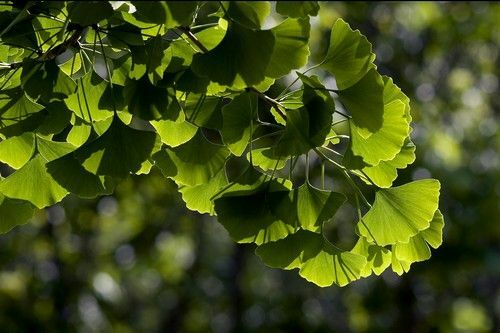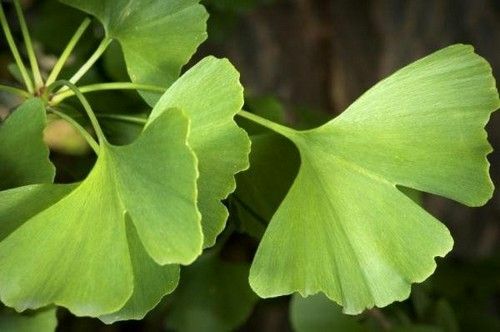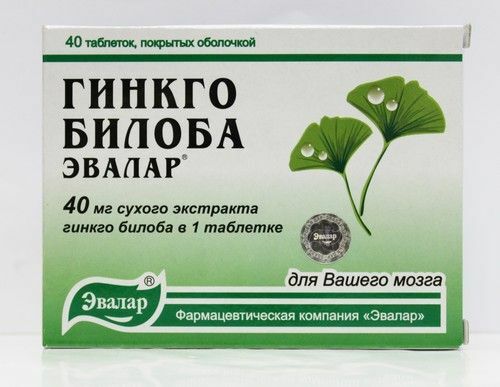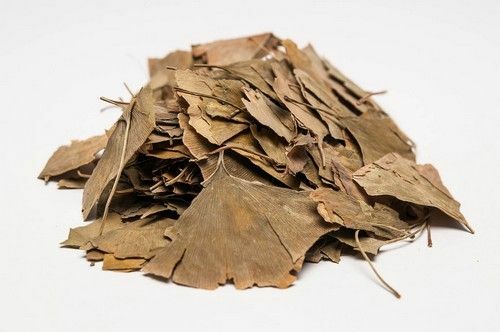- Therapeutic properties of
- Ways of using ginkgo biloba for medicinal purposes
- Application of ginkgo biloba in children
- Contraindications
Ginko biloba is one of the unique plants on our planet. This ancient species of trees has been preserved on Earth for millions of years since the Ice Age. In the natural habitat in the territory of East China trees grow to very large sizes( height up to 45 m, trunk diameter up to 4 m), and their life span is about 2 thousand years. Currently, due to the resistance to various weather conditions and the undemanding to the soil, ginkgo biloba can be found in Europe and East Asia, in Russia, America, and the Caucasus.

The plant is dioecious: male individuals produce pollen, and female ones produce seed. Of particular value are tree leaves that have the shape of a fan. They have unique healing properties and are widely used both in folk and in traditional medicine.
The healing properties of
Ginkgo biloba is known as a plant that prolongs youth. Its medicinal properties slow down the aging process of the body. Preparations based on it improve the condition of blood vessels, rheological properties of blood, increase the elasticity of the skin, stimulate blood circulation and brain activity.
More than four tens of biologically active compounds are found in the leaves of the tree, which have a complex therapeutic effect on the human body. These include:
- triterpene lactones( gingolides and bilobalides);
- flavonoid glycosides( kaempferol, quercetin);
- organic acids;
- vitamins;
- essential oils;
- steroids;
- alkaloids;
- minerals( Se, Mn, Ti, Cu, P, Ca, Mg, Fe).
Important: Some biologically active substances in ginkgo biloba( ginkolides and bilobalides) are found only in this plant species.

The therapeutic effect of the plant has a positive effect on the work of the brain, cardiovascular and nervous system, respiratory organs. It consists in the following:
- decrease in blood viscosity, enrichment with oxygen;
- prophylaxis of thrombosis;
- increase the elasticity of blood vessels and reduce the permeability of their walls;
- removal of spasms and vasodilation, improvement of microcirculation, especially in the brain;
- increase in oxygen supply to organs and limbs;
- slowing down the aging process due to pronounced antioxidant activity;
- strengthening of immunity;
- is a diuretic and decongestant;
- normalization of metabolic processes;
- lowering of cholesterol in the blood;
- increase of mental abilities, concentration of attention and memory;
- improvement of nerve impulse transmission processes.
Ginkgo biloba helps with hearing loss, vision, eliminates headaches, dizziness, reduces the risk of strokes and heart attacks. The plant is very effective in migraine, in the complex therapy of diabetes mellitus for the prevention and treatment of vascular complications( retinopathy, neuropathy, angiopathy).Ginkgo biloba is also used in polycystic ovaries of the central genesis, caused by a violation of the regulation of hormone production in the brain, and in the violation of the menstrual cycle. Funds from the leaves of the tree due to the improvement of blood circulation in the organs of the small pelvis are effective in hemorrhoids and in the violation of potency in men. In China, this plant is considered one of the effective ways to treat bronchial asthma.
Ginkgo biloba is a part of many cosmetic products that slow the aging of the skin and promote its renewal. Used to fight cellulite.
Ways of using ginkgo biloba for medicinal purposes
The medicinal raw materials for the preparation of folk recipes based on ginkgo biloba are the leaves of the plant. They are harvested after full ripening, when they acquire a rich green color, then dried and used for their intended purpose. In the absence of opportunity or skills for independent collection of raw materials, it can be purchased at shops selling herbs. As folk remedies use infusion or tincture of leaves.
Important: Collecting ginkgo biloba leaves for therapeutic use is recommended in places where they grow massively.
In pharmacies there is a large selection of ready-made preparations in various dosage forms based on the extract from the leaves of the plant. These include Ginkgo Biloba, Bilobil, Tanakan, Memoplant, Ginkoum, Ginos, etc. The treatment scheme is selected by the doctor individually.

Leaf tincture
Tincture of ginkgo biloba leaves is prepared on alcohol or vodka according to the following recipe:
- The leaves of the plant are ground.
- The obtained raw materials are transferred into hermetically sealed containers and poured with vodka or alcohol at the rate of 10 g of leaves per 100 ml of liquid.
- The capacity is put in a dark and cool place for 14 days, shaking daily.
- After expiration of the infusion, the mixture is filtered and poured into a container of dark glass for storage.
How to store tincture from ginkgo biloba leaves and how to take it? Store the product in the refrigerator. Dosage at one time is 20 drops. Take tincture three times a day before meals. Before use, you can dilute the required amount of tincture in half a glass of water. The course of admission is 1 - 3 months. Repeat treatment is recommended three times a year.
Infusion of leaves
For the preparation of infusion, you can use dry or fresh leaves of ginkgo biloba. Preliminarily they are ground in a mortar or with a knife. In a thermos, cover one tablespoon of vegetable raw material, and then add to it 300 ml of boiling water and tightly close. Insist for two hours, filtered through gauze and drink 100 ml for half an hour before each meal. The course of treatment continues 1 - 2 months, after it is completed, it is necessary to take a break. A noticeable effect appears at the end of the first month of taking the remedy.

Tip: For the prevention of cardiovascular diseases it is useful to use a mixture of crushed fresh leaves of ginkgo biloba and honey in a ratio of 1 to 10.
Application of ginkgo biloba in children
Ginkgo biloba products for children under 16years, as a rule, are not appointed due to the lack of sufficient information about their safety.
Exceptions are small patients suffering from attention deficit hyperactivity disorder caused by immaturity of the brain. There is an experience of using the medicinal properties of this ancient tree in such children, which shows good results. It has been established that the use of the products on the basis of this plant in combination with magnesium preparations makes it possible to accelerate the processes of brain development and improve its functions by increasing the intake of oxygen and normalizing blood circulation. After three months of continuous treatment in children, there was an improvement in social behavior and the ability to focus attention.
Contraindications
Folk remedies based on ginkgo biloba have contraindications for use. These include:
- violations of the process of blood clotting;
- pregnancy and lactation;
- period before surgery;
- individual intolerance;
- epilepsy;
- acute myocardial infarction.
You should also not take ginkgo biloba to people who take anticoagulants and antiaggregants, as the risk of bleeding increases.
Means based on the leaves of this plant are usually well tolerated, but in some cases there are abnormalities in GI and allergic reactions.
Important: Before using ginkgo biloba in both medical and preventive care, a doctor's consultation is necessary.
Video about the useful properties of the plant:
